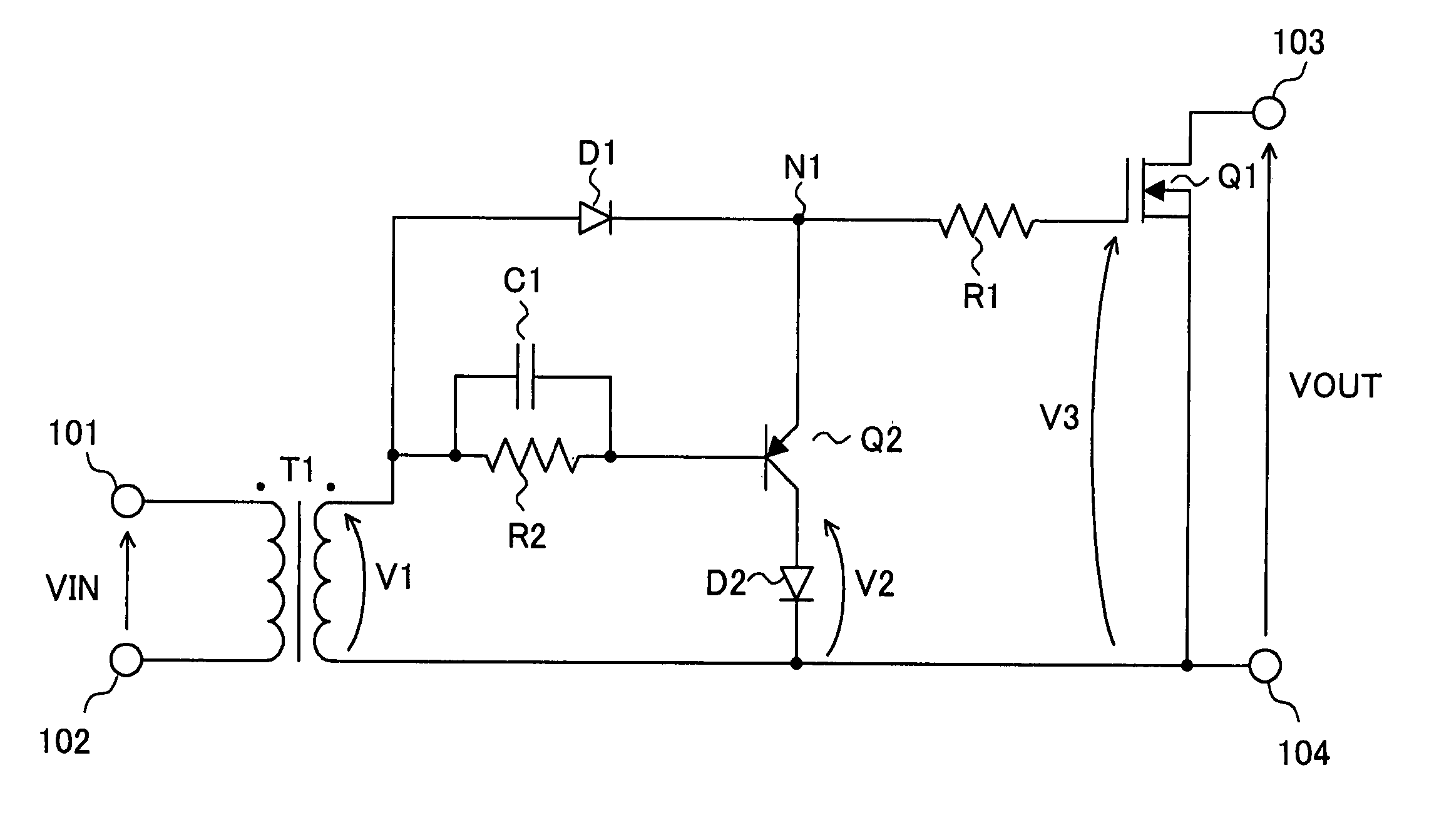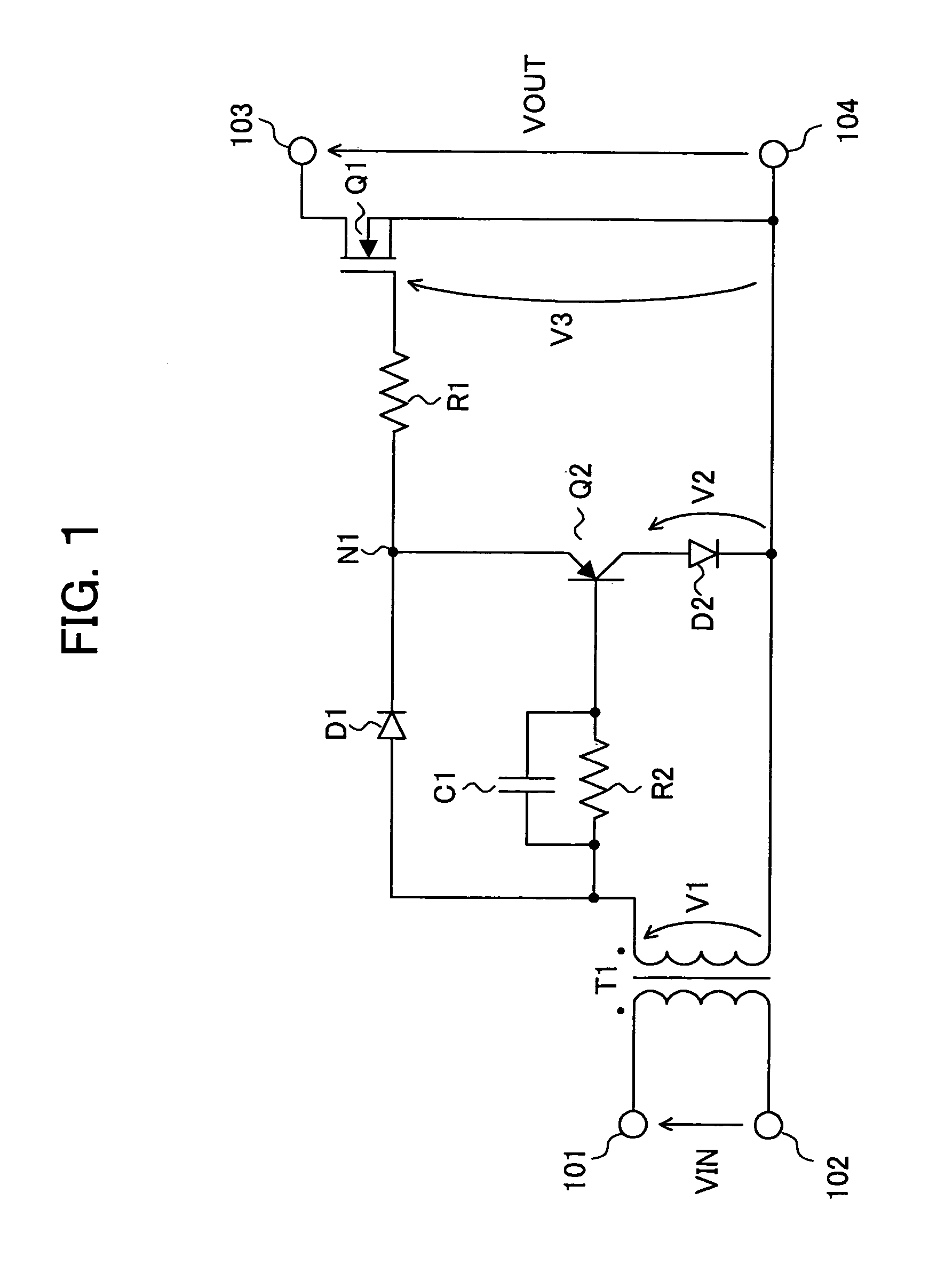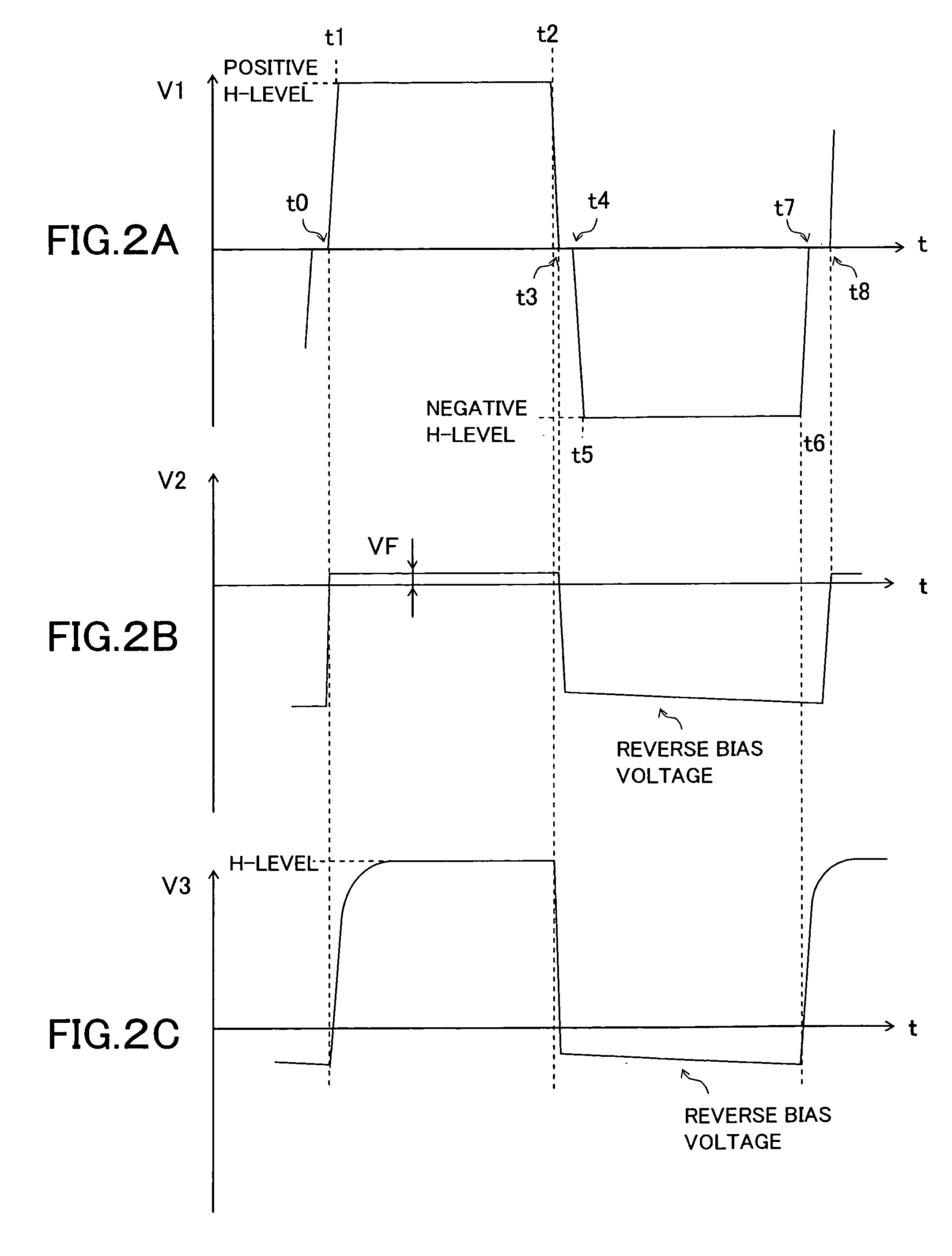Drive circuit and power supply apparatus
a technology of power supply circuit and power supply apparatus, which is applied in the direction of pulse technique, process and machine control, instruments, etc., can solve the problems of large power dissipation (consumption), and large level of lc resonance, so as to reduce a level of resonance, reduce power dissipation, and widen the operating temperature range
- Summary
- Abstract
- Description
- Claims
- Application Information
AI Technical Summary
Benefits of technology
Problems solved by technology
Method used
Image
Examples
first embodiment
[0030]FIG. 1 is a circuit diagram of drive circuit 1 according to the first embodiment of the present invention. Note that, in FIG. 1, a node N1 corresponds to a first node in the present invention.
[0031]In FIG. 1, a terminal 101 and a terminal 102 constitutes input terminals of the drive circuit 1. An external pulse generating circuit supplies a pulse signal (input signal VIN) of which positive level and negative level are the same.
[0032]Both terminals of the primary winding of the transformer T1 are connected to the input terminals respectively. That is, the transformer T1 is excited by the input signal VIN. As a result, a voltage is generated in response to the input signal VIN in the secondary winding of the transformer T1.
[0033]Both terminals of the secondary winding of the transformer T1 are connected, via a diode D1 and a resistor R1, to a gate (first control terminal) and a source (reference terminal) of a NMOS transistor Q1 respectively.
[0034]The diode D1 is connected so th...
second embodiment
[0077]Next, a drive circuit 1a according to the second embodiment will be described.
[0078]FIG. 3 shows a circuit diagram of the drive circuit 1a according to the second embodiment. Note that, the parts in FIG. 3 have the same symbol as that of the parts in the drive circuit 1 (first embodiment) in FIG. 1 when they are the same.
[0079]The drive circuit 1a according to the present embodiment is, compared to the above drive circuit 1 according to the first embodiment, is to shorten rise time of the gate voltage V3 of the NMOS transistor Q1 and to further reduce power dissipation.
[0080]As obviously shown in FIG. 1 and FIG. 3, the drive circuit 1a according to the present embodiment is different from the drive circuit 1 according to the first embodiment, in adding a diode D3 in parallel with the resistor R1 connected to the NMOS transistor Q1.
[0081]Below, differences will be described in operation compared to the drive circuit 1 with reference to FIG. 2.
TIME t0 to t2
[0082]As shown in FIG....
third embodiment
[0097]Next, a drive circuit 1b according to the third embodiment will be described.
[0098]FIG. 4 shows a circuit diagram of the drive circuit 1b according to the third embodiment. Note that, the parts in FIG. 4 have the same symbol as that of the parts in the drive circuit 1a (second embodiment) in FIG. 3 when they are the same.
[0099]As obviously shown by FIG. 3 and FIG. 4, the drive circuit 1b according to the present embodiment is different from the drive circuit 1a according to the second embodiment, in adding a resistor R3 between the emitter and the base of the transistor Q2.
[0100]Generally, when a bipolar type transistor functions as a switch, delay time of the switching becomes longer under high temperature environment.
[0101]In the present embodiment, as shown in FIG. 4, the resistor R3 is added between the emitter and the base of the transistor Q2, thereby stabilizing a bias voltage between the emitter and the base and shortening the delay time.
[0102]Therefore, the drive circ...
PUM
 Login to View More
Login to View More Abstract
Description
Claims
Application Information
 Login to View More
Login to View More - R&D
- Intellectual Property
- Life Sciences
- Materials
- Tech Scout
- Unparalleled Data Quality
- Higher Quality Content
- 60% Fewer Hallucinations
Browse by: Latest US Patents, China's latest patents, Technical Efficacy Thesaurus, Application Domain, Technology Topic, Popular Technical Reports.
© 2025 PatSnap. All rights reserved.Legal|Privacy policy|Modern Slavery Act Transparency Statement|Sitemap|About US| Contact US: help@patsnap.com



